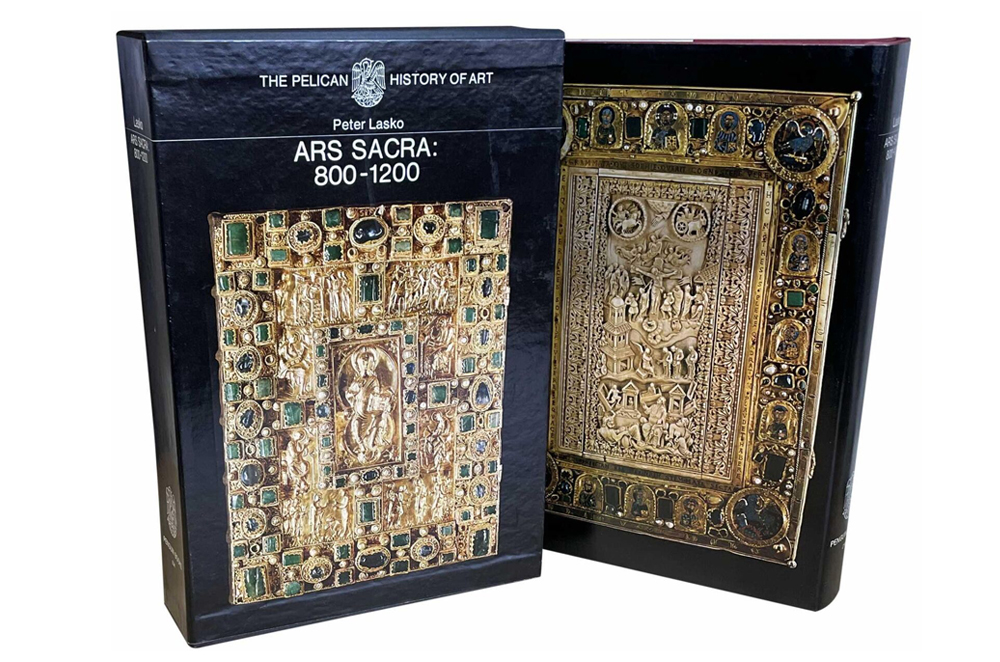ARS SACRA 800-1200

ARS SACRA : 800-1200 Peter Lasko - The Pelican History Of Art
For an understanding of the art of the Early Middle Ages it is essential to consider reliquaries and shrines, book bindings and ivory carvings, goldsmith’s work and bronze casting, as much as major sculpture and painting. This Is why The Pelican History of Art is devoting three volumes to art from 800 to 1200: one to sculpture, one to painting, and this, to Ars Sacra—a more evocative title which avoids the customary, but objectionable and almost derogatory term ‘Minor Arts’, Indeed the objects discussed in this volume are ‘sacred’, for the most part made to contain the most precious mortal remains of saints or for the celebration of the Mass and other Sacraments, or the decoration of the altar. Even imperial or royal regalia, which might be thought to be secular, were regarded as divine gifts, symbolic of the sacred power of the ruler: rex et sacerdos, God's vicar on earth. Such regalia were necessary to the anointing and the dedication of kings, part of the ritual of the Church.
Peter Lasko, after training at the Hammersmith and St Martin's Schools of Art, took his B.A. in Art History at the Courtauld Institute of the University of London. In 1950 he was appointed Assistant Keeper in the Department of British and Medieval Antiquities at the British Museum, where he specialized in the material covered in this volume. Since 1965 he has held the chair of the Visual Arts ih the School of Fine Arts and Music at the University of East Anglia at Norwich. Professor Lasko has here written about the great variety of techniques employed in the period and has succeeded in presenting a complex subject clearly and readably. The changes of chronology, new grouping of material, or new assessment of stylistic sources he suggests are the results of his own researches, He presents to the interested public and to students material which is often scattered in specialized literature : and usually treated separately by technical categories such as ivories, enamels, or ‘ goldsmith’'s work, This volume Is an attempt to deal with this subject for the first time comprehensively and at a length justified by its importance for the study of the Early Middle Ages.
Front cover: Christ in Majesty, the four Evangelists, and scenes from the life of Christ. Book-cover (front) of the Codex Aureus from St Emmeram, Regensburg, 870. Munich, Bayerische Staatsbibliothek Back cover; Crucifixion, ivory, c. 820/30, on the book-cover of the Book of Pericopes of Henry Il, early eleventh century. Munich, Bayerische Staatsbibliothek
